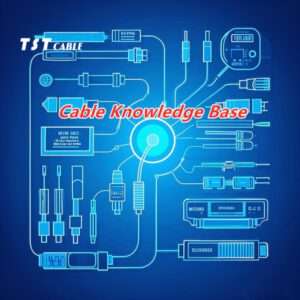
- Home
- /
- Nuclear power sensor
Application of Cables in Nuclear Power Sensors
1. Scene Introduction
With the rapid development of nuclear power technology, the safe and stable operation of nuclear power plants is crucial to guarantee national energy security and ecological environment. Sensors, as key equipments in nuclear power plants, are responsible for real-time monitoring of various operating parameters, providing important data for safety control and operation management of nuclear power plants. As a key component connecting sensors and data processing system, the performance and quality of nuclear power sensor cable directly affects the monitoring effect and operation safety of nuclear power plant.
2.The pain point analysis
In the field of nuclear power, the application of sensor cables faces many challenges. First of all, the operating environment of nuclear power plants is complex, the cable needs to withstand high temperature, high pressure, high radiation and other harsh conditions, and at the same time to ensure the stable transmission of signals. Secondly, the sensor cable needs to have good electromagnetic shielding performance to resist external electromagnetic interference and ensure the accuracy of the data. In addition, the cable selection, process and installation, etc. also need to reach high standards to meet the long-term stable operation of nuclear power plants.
3.The nuclear power sensor cable requirements
Nuclear power sensor cable requirements are mainly reflected in the following aspects:
Electrical performance: the cable should have excellent electrical conductivity and insulation to ensure the accurate transmission of signals; at the same time, the impedance matching and attenuation characteristics of the cable should also meet the requirements to reduce signal loss.
Environmental adaptability: the cable should be able to work normally in harsh environments such as high temperature, high pressure and high radiation, and it should have good weather resistance and corrosion resistance.
Electromagnetic shielding performance: the cable should have good electromagnetic shielding effect to resist external electromagnetic interference and ensure signal stability and accuracy.
Mechanical and physical properties: the cable should have sufficient mechanical strength and flexibility to adapt to the complex environment of the nuclear power plant installation and operation requirements.
4.The nuclear power sensor cable certification standards
Nuclear power sensor cable certification standards are strict and diverse, demanding, including the International Atomic Energy Agency (IAEA) standards, IEEE standards, IEC standards and national nuclear safety regulations. These standards on the electrical performance of the cable, environmental adaptability, electromagnetic shielding performance, mechanical and physical properties, etc. have made detailed provisions to ensure that the cable in the nuclear power plant in the safe and reliable operation.
5. Cable selection
For the special needs of nuclear power sensors, we recommend the selection of PEEK cables with excellent electrical performance, environmental adaptability and electromagnetic shielding performance.
In terms of material selection, we use low-smoke halogen-free flame retardant, high-temperature, radiation and corrosion-resistant high-performance materials;
In structural design, we adopt multi-layer shielding structure, small volume, light weight, and effectively reduce electromagnetic interference;
In the production process, we strictly control each link to ensure that the quality and performance of the cable reaches the best state.
Selection parameters for reference (can be customized according to actual needs)
Long-term temperature resistance: -50-250℃
Voltage resistance level: 300V 600V
Gamma ray resistance: 850KGy can be used for a long time.
Low smoke, halogen-free, flame retardant, high and low temperature resistance
6. Product Characteristics
TST CABLES nuclear power sensor cable solutions have the following remarkable characteristics:
Radiation Resistance: Cables with radiation resistant materials (e.g. thermoset insulation and jacketing materials) are used to withstand the effects of gamma radiation.
Heat resistance: cables designed to withstand high temperatures ensure reliable operation in high temperature environments.
Chemical resistance: Made from special materials, the cables are resistant to chemicals and corrosive substances commonly found in nuclear power plants.
Long-term reliability: Cables are designed to incorporate features that ensure long-term reliability, such as shielding to prevent electromagnetic interference and insulation with high dielectric strength.
Resistance to mechanical stress: The cables are designed to withstand mechanical stress, including vibration and bending, to ensure continuous signal transmission.
Recommended Products
The back-end cable of the nuclear power sensor is radiation-proof, durable, flame-retardant, and resistant to high and low temperatures. It is a key component of the nuclear power plant and is responsible for transmitting signals from sensors located in radiation-sensitive areas to the control and monitoring system.
7.Technical Tests
To ensure that the quality and performance of nuclear power sensor cables meet the requirements, TST CABLES conducts a series of rigorous technical tests. These tests include electrical performance tests, environmental adaptability tests, electromagnetic shielding performance tests and mechanical and physical performance tests. Through these tests, we have verified the excellent performance and stability of the cable to ensure that it can meet the special needs of nuclear power sensors.
8. Cable laying installation and commissioning
In the nuclear power sensor cable laying installation and commissioning process, TST CABLES follow strict operating procedures and safety standards. First, according to the layout of the nuclear power plant and the distribution of sensors, to develop a reasonable cable laying program. Then, professional tools and equipment are used for cable laying and fixing to ensure that the direction and fixing points of nuclear power sensor cables meet the design requirements. Finally, carry out debugging and testing of the system to ensure that the connection between the sensors and the data processing system is fast, stable, smooth, safe and reliable.
9. After-sales maintenance & technical support
TST CABLES provides comprehensive after-sales maintenance and technical support services. Once the nuclear power plant sensor cables have problems or failures, TST CABLES’ professional team will respond quickly to provide effective solutions and technical support. At the same time, we also regularly inspect and maintain the cable to ensure its long-term stable operation.
10.The actual application of nuclear power sensor cable program examples
A large nuclear power plant off the coast of China decided to upgrade the existing sensor cable system in order to improve its operational efficiency and safety. After market research and technology comparison, the nuclear power plant finally chose TST CABLES for its customized nuclear power sensor cable solutions.
In the course of the project, TST CABLES first conducted a detailed study of the operating environment of this nuclear power plant, including factors such as temperature, humidity, radiation levels, etc., to ensure that the selected cable materials could adapt to these extreme conditions. Subsequently, we developed cable specifications, lengths and connections based on the type and distribution of sensors to meet the data transmission needs between different sensors.
For cable selection, TST CABLES used special cables with excellent electrical properties and environmental adaptability. These cables are not only able to operate stably under high temperature, high voltage and strong radiation environments, but also have good electromagnetic shielding properties to ensure the accuracy and reliability of nuclear power sensor data.
After the completion of the project, TST CABLES conducted comprehensive testing and acceptance of the nuclear power cable system. The results show that the nuclear power sensor cable solution fully meets the operational requirements of nuclear power plants, and the efficiency and accuracy of sensor data transmission has been significantly improved. In addition, TST CABLES nuclear sensor cable solution also improves the safety and stability of nuclear power plants, providing a strong guarantee for the long-term operation of nuclear power plants.
Other solutions for cables in nuclear applications.
WHY CHOOSE TST CABLES
10 years of experience
Specializing in the production of railway cables for 10 years
Engineer-to-engineer one-on-one support
Engineers provide one-on-one service to assist with product selection and problem-solving
Customization according to requirements
With a strong R&D team, we support customized cables based on specific needs
Quality certification
Stringent adherence to industry standards, complete certification
Fully testing facilities
Various tests based on customer requirements
10,000 ㎡ factory
Welcome to visit our factory face to face
RELATER NEWS
Also available in:
Arabic
English
German
Indonesian
Japanese
Russian
Spanish
Thai
Vietnamese
Portuguese (Brazil)





